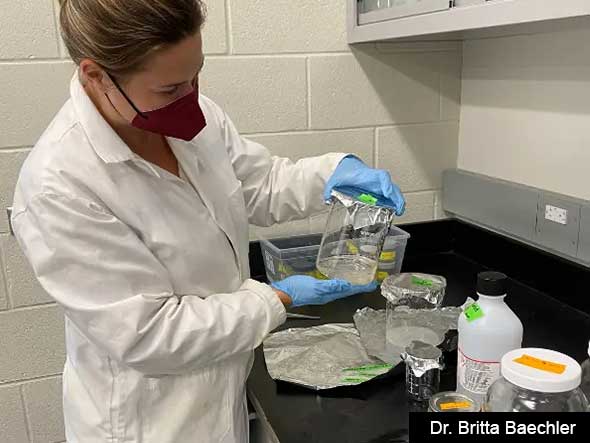(Ocean Conservancy – January 8, 2024)
Researchers at Ocean Conservancy and University of Toronto estimate that American adults could be consuming up to 3.8 million microplastics per year from protein alone.
Portland, Ore. – A new study led by researchers at Ocean Conservancy and the University of Toronto and published today in the journal Environmental Pollution found microplastic particles in 88% of protein food samples tested. The samples were drawn from 16 different protein types* destined for U.S. consumers, including seafood, pork, beef, chicken, tofu, and three different plant-based meat alternatives.
It’s Not Just Seafood: New Study Finds Microplastics in Nearly 90% of Proteins Sampled, Including Plant-Based Meat Alternatives
While scientists have long documented the presence of microplastics in the digestive tracts of commercial fish and shellfish like salmon, halibut and oysters, there has been little research into whether these microplastics are entering the filets of the fish – the parts that are actually eaten by people; and little research into terrestrial protein sources like beef and chicken that make up a large part of the American diet. In this study, microplastics were found in all 16 protein types tested, suggesting that humans are likely eating microplastics no matter the source of protein they choose. Furthermore, there were no statistical differences in microplastic concentrations between land- and ocean-sourced proteins.
“This is a startling reminder of just how prolific plastic pollution has become – humans live on land and yet seafood samples are just as likely to be contaminated with plastics as are terrestrial derived proteins,” said study co-author Dr. Britta Baechler, a marine biologist and Associate Director of Plastics Science at Ocean Conservancy. “And there’s no escaping them no matter what you eat, it seems. The plastic pollution crisis is impacting all of us, and we need to take action to address its many forms.”
The study found evidence that food processing is a likely source of microplastic contamination, as highly processed protein products (like fish sticks, chicken nuggets, tofu, and plant-based burgers, among others) contained significantly more microplastics per gram than minimally processed products (items like packaged wild Alaska pollock, raw chicken breast, and others). However, no statistical difference was found between high-processed products and fresh-caught products, suggesting that food processing is not the only source of microplastic contamination and opening avenues for further research.

“It’s tempting to want to draw conclusions like ‘eat less of this and more of that’ to avoid microplastics in your diet; but right now we still know very little about the microplastic burdens in commonly consumed foods. Our study adds to this knowledge but also demonstrates the need for further research to better understand the bigger picture, including where these microplastics are coming from and the potential human health risks,” said primary co-author Madeleine Milne, who conducted the research while at the Rochman Lab at the University of Toronto in 2022.
Notably, across all samples, nearly half (44%) of the identified microplastics were fibers, which is consistent with other studies suggesting that fibers are the most prevalent form of microplastic in the environment. About a third of the microplastics (30%) were plastic fragments.

